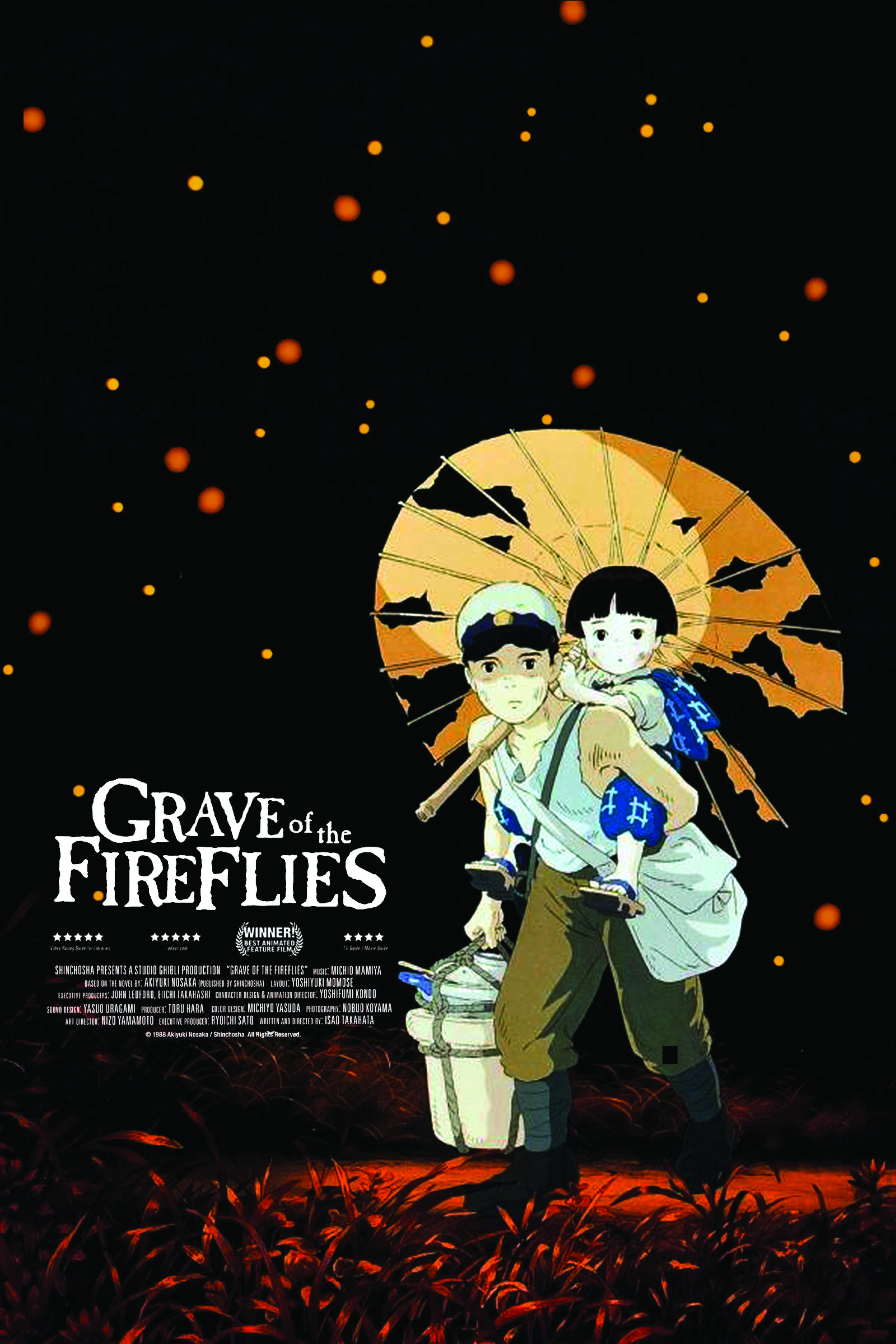Film Review: Grave of the Fireflies (1988)



I am not steadfastly against animated films, even if there aren’t many that I would call “great.” I don’t judge movies based on whether flesh and blood human beings act out the drama, or if characters only drawn by human beings do it. And what can we even call “live-action” or “animated” these days, anyway? All those Avengers movies – and others like them – have copious amounts of computer-generated animation but are not considered animated films. On the other hand, this summer’s The Lion King is made up entirely of animation, yet it has been called a live-action remake.

None of that concerns me. What I’m after are compelling stories – preferably ones with a depth of emotion and thoughtful presentation. Grave of the Fireflies – a film that happens to be animated – accomplishes this with great care and honesty. It is a deeply moving film about an often overlooked aspect of war that, while difficult to watch, is also a rich and rewarding experience. Regardless of one’s attitude towards the animated form, there is no denying the power of this remarkable piece of cinema.

Whenever I watch a movie about war, I always come back to François Truffaut’s famous statement that “there is no such thing as an anti-war film.” This observation – meant to point out that war films, even ones skewed as anti-war, inevitably glorify the righteousness of combat and the brotherhood of soldiers – holds up in almost every case. Grave of the Fireflies stands out as an exception to the rule, and heartbreakingly so. (Stanley Kubrick’s Paths of Glory and Masaki Kobayashi’s The Human Condition also come to mind.)

What sets this film – directed by Isao Takahata for Japan’s world-renowned Studio Ghibli – so far apart from the pack is its protagonists and their point of view. They are children, not soldiers, and their plight is not one of glory or honor but of survival. In the waning months of World War II, Seita and Setsuko (voiced by Tsutomu Tatsumi and Ayano Shiraishi) are forced to flee their home after American bombers drop wave after wave of napalm on the city of Kobe, Japan. In the chaos, Seita, a teenager, does his best to look after his young sister Setsuko, but desperation and hunger often get the best of him.

At times, the pair seem truly happy in the world they’ve created out of an unimaginable situation. Seita is loving and warm towards his sister, and very good at keeping her calm in the face of horror. Long moments of silence provide opportunities for reflection and contemplation which serve to exemplify the naively idyllic civilization the siblings inhabit. Crisis, however, is always boiling just under the surface. As viewers, we know the true fatalistic nature of their endeavors (as revealed in the film’s opening), making the comforts they’ve carved out for themselves even more tragic. It’s this predestined fate that creates the film’s unbearable tension. Worsening tragedy will strike the children, it’s only a matter of how and when.

Grave of the Fireflies does not glorify combat, it reveals its aftermath on those it affects the most. War seen through the eyes of children is a sobering experience – and it damned well should be. No matter the conflict, these kinds of stories are true and they are happening right now. That’s a terrifying and startling notion. It’s often easy to pass off a war film as escapism, or worse, recruitment, when it’s not much more than “good guys” with guns shooting “bad guys” with guns. Seeing the effects it has on the very young, however, are harder to pass off as mere entertainment.

But, when the true face of war is revealed, Takahata – and Akiyuki Nosaka, the author of the autobiographical novel which serves as the film’s source material – urge you to not look away and to not condescend. It’s important to see the real damage conflict causes on the faces of the children who’ve been destroyed by it. That’s what Grave of the Fireflies offers through its beautiful imagery and unforgettable story. It offers a lot more, too, if you’ll let it.
